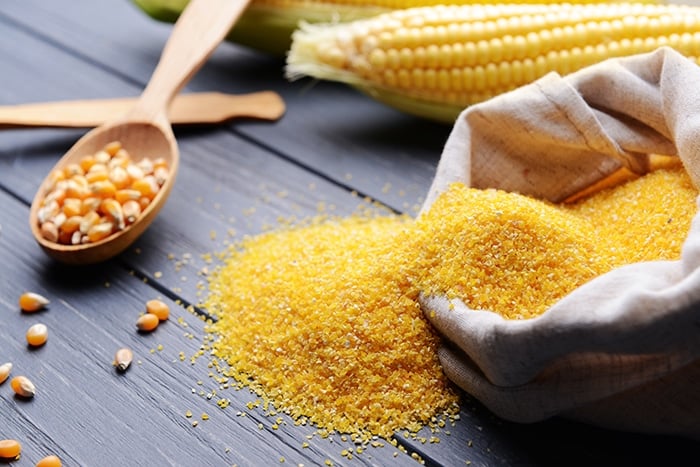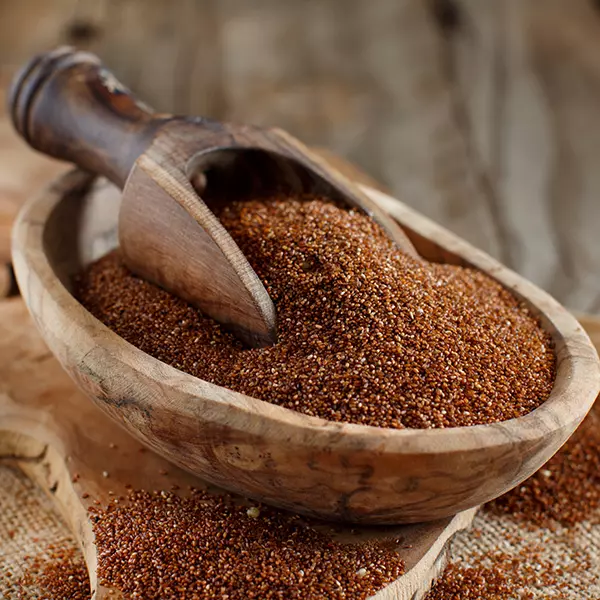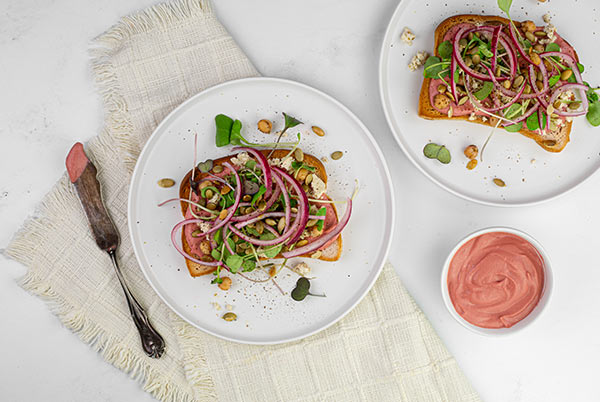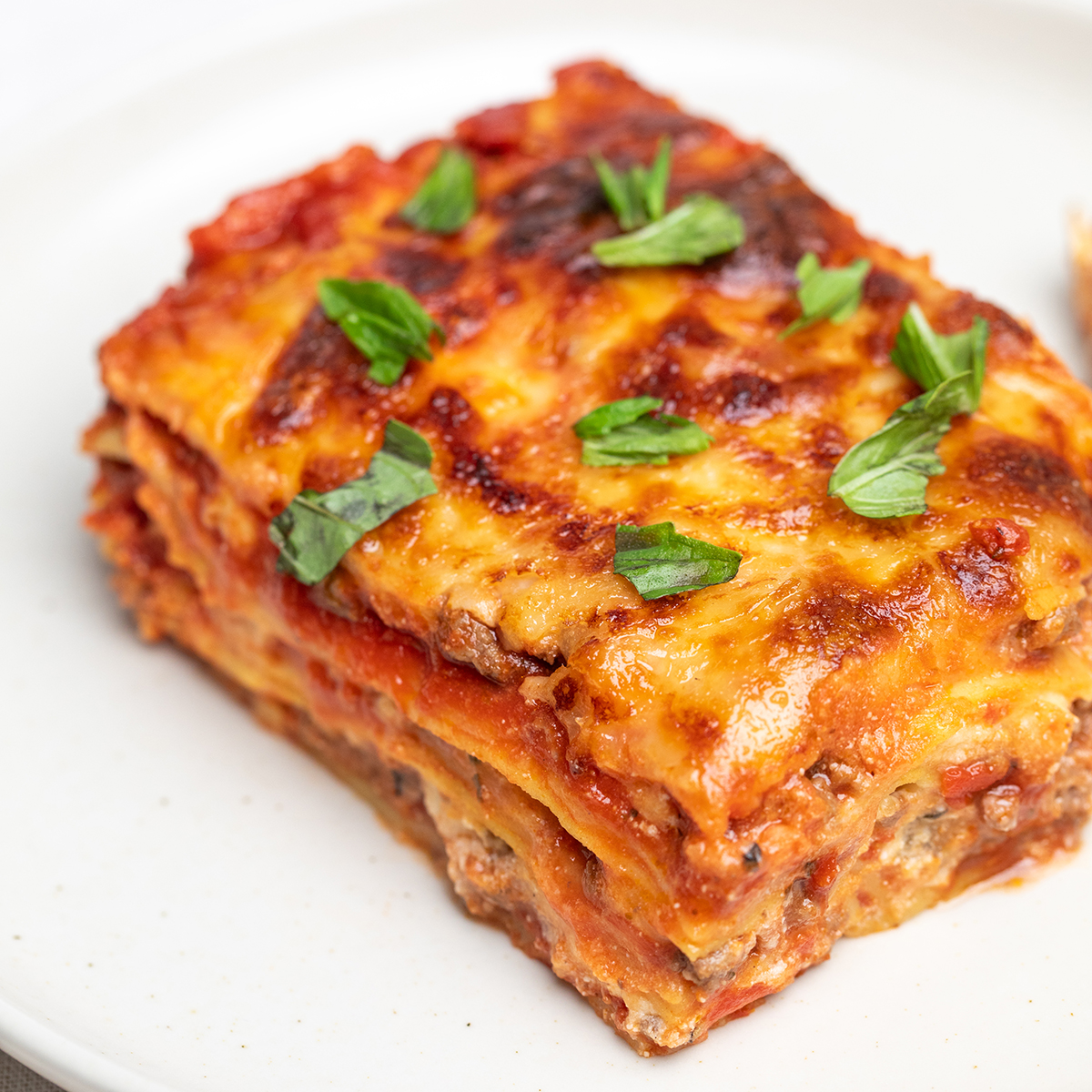For those who are sensitive to gluten, have a gluten allergy, or have celiac disease, it’s crucial to find gluten free grains that can provide the essential nutrients found in whole grains.
Using grain free recipes is great, in moderation, but I believe that the addition of whole grains into a gluten free diet is good for you. Let’s take a look at whole grains that are gluten free and which ones to avoid.
What is a whole grain?
A whole grain is a cereal grain that comprises all three essential parts of the kernel: the bran, the germ, and the endosperm. Each part contributes unique nutritional benefits that make whole grains a crucial component of a healthy diet.
Bran: The bran is the outer layer of the kernel and has the whole grain’s fiber. The fiber content in the bran supports healthy digestion, aids in weight management, and helps regulate blood sugar levels.
Germ: The germ is the reproductive part of the kernel, from which a new plant can grow. It contains essential nutrients such as B vitamins, vitamin E, and healthy fats, all of which can help protect against various diseases and support overall well-being, and aid in a feeling of fullness and satisfaction from what we eat.
Endosperm: The endosperm is the starchy center of the kernel, which provides energy and sustenance for the growing plant. It contains mostly carbohydrates and protein.
Whole grains are minimally processed, retaining all parts of the grain, and therefore its entire profile of nutrients and fiber. This sets them apart from refined grains, where the bran and germ are removed, leaving only the starchy endosperm. The refining process strips away many of the nutrients and fiber, which makes refined grains quicker to digest, and less healthy than their refined counterparts.
Do all whole grains have gluten?
No, not all whole grains contain gluten. Gluten is a protein found in specific grains, such as wheat, barley, and rye. Many other whole grains are naturally gluten free, offering delicious and nutritious alternatives for those with gluten sensitivities or celiac disease.

Which whole grains do not have gluten?
Naturally gluten free grains are far more common than you might think. It’s just that so often, there’s a risk of cross-contamination during harvesting or processing with other grains. But, if you shop certified gluten free products, you’ve got plenty of safe whole grain options for your gluten free lifestyle. Let’s explore the whole grain choices for those who can’t tolerate gluten.
Oats
Oats are a nutritious, gluten free whole grain with numerous health benefits. They are rich in fiber, vitamins, minerals, and antioxidants. Oats support heart health by lowering cholesterol levels, help regulate blood sugar, aid in weight management, and promote healthy digestion.
While oats contain a protein called avenin, similar to gluten, most individuals with celiac disease or gluten sensitivity can tolerate it. However, cross-contamination with gluten-containing grains can occur during processing.
To minimize risk, you should choose labeled gluten free oats and monitor your body’s response to avenin. If you have celiac disease or gluten sensitivity and you are also intolerant of or sensitive to oats, don’t eat them.
Brown rice
Brown rice is a versatile, gluten free whole grain packed with vitamins, minerals, and fiber. Its nutritional profile includes essential nutrients like B vitamins, magnesium, and folate. As a staple in numerous cuisines, brown rice and its fiber content supports healthy digestion and weight management by promoting satiety.
For those following a gluten free diet, brown rice can also be used as a flour substitute. Brown rice flour, made by grinding whole brown rice, is an excellent alternative to wheat flour in various recipes, including baked goods and thickening sauces.
Using brown rice flour helps maintain the nutritional benefits of whole grains in gluten free dishes. A balance of white rice flour and brown rice flour is usually needed in a recipe to create gluten free baked goods with the proper texture and mouth feel.
Millet
Millet is a small, gluten free grain with an impressive nutritional profile, particularly as a source of magnesium. This ancient grain is also a good dietary fiber source, promoting healthy digestion, weight management, and overall well-being.
Millet’s mild flavor and quick cooking time make it a versatile addition to a wide variety of meals. It can sometimes be used as a substitute for rice or quinoa in dishes like pilafs, salads, and porridges.
Additionally, millet can be ground into flour and used in gluten free baking recipes, including bread, pancakes, and muffins.
Amaranth
Amaranth, an ancient gluten free pseudo-grain since it’s actually a seed but resembles and acts like a grain, is known for its high protein and fiber content and low carbohydrate content. This nutrient-dense grain also contains a range of antioxidants and essential amino acids, contributing to overall health and well-being.
The distinct nutty flavor of amaranth makes it a versatile ingredient, suitable for a variety of dishes, from salads to porridge. It can be cooked and served as a side dish, mixed into stews and soups, or even popped like popcorn for a wholesome snack.
Additionally, amaranth flour can be used in gluten free baking recipes, providing a nutritious alternative to traditional wheat flour. It absorbs a lot of liquid, like many whole grain flours in baking, so recipes you use should be developed specifically for using this unique whole grain.
Buckwheat
Buckwheat, also a gluten free pseudo-grain, is rich in fiber, protein, and essential minerals. Buckwheat flour is a popular choice for making traditional soba noodles in Japanese cuisine, and it’s a common ingredient in some gluten free pancake recipes.
Teff
Teff, a tiny gluten free pseudo-grain that we use as a whole grain, originates from Ethiopia, is a nutritional powerhouse, boasting high levels of protein, fiber, and minerals like calcium, iron, and magnesium. Additionally, teff contains essential amino acids and various vitamins, adding to its status as a health-promoting ingredient.
Traditionally, teff is used to make injera, a sourdough flatbread that is a staple in Ethiopian and Eritrean cuisines. Its unique, slightly nutty and earthy flavor pairs well with a variety of dishes.
Sorghum
Sorghum, a hearty gluten free grain, has a mild, lightly sweet flavor that complements various dishes. Nutrient-dense, sorghum is an excellent source of fiber, protein, and nutrients. This versatile grain can be used in a range of preparations, from salads and grain bowls to stews and soups.
Sorghum can be ground into flour for gluten free baking in recipes like bread, muffins, and pancakes. In combination with other gluten free whole grains like teff, it can give a “wheaty” type of flavor to some gluten free baked goods.
Quinoa
A gluten free pseudo-cereal, quinoa is gluten free and highly nutritious, even containing all nine essential amino acids, making it a complete protein source.
With its fluffy texture and nutty taste, quinoa is an excellent addition to a variety of dishes, including salads, soups, and pilafs. It can be used as a substitute for rice or couscous, adding a unique flavor and a boost of nutrients to your meals.
Quinoa is also versatile enough to be incorporated into breakfast dishes, like porridge, or used as a base for veggie burgers and grain bowls.
Corn
Corn is a gluten free whole grain that contains fiber and vitamins, but is also very high in starch. Corn’s versatility allows it to be used in various forms and dishes.
Cornmeal in its various grinds is useful in recipes such as cornbread, muffins, and pancakes. And, of course, when the whole grain is popped, popcorn is a wholesome snack.

Which whole grains contain gluten?
While many whole grains are naturally gluten free, some contain significant amounts of gluten, a protein that can cause adverse reactions in those with gluten sensitivity or celiac disease. Among them are:
- Wheat (as well as varieties such as einkorn, farro, kamut, spelt, semolina, graham, or durum wheat)
- Barley
- Rye
- Triticale (a hybrid of wheat and rye)
Recipes made with gluten free whole grains
So many of my gluten free recipes contain whole grains. Here are a few of my favorites.
Finding gluten free whole-grain products
Many grocery stores and online retailers carry gluten free whole grain products. Check for certified gluten free labels and the ingredients list to ensure the products meet your dietary needs. And, of course, you can check out my list of gluten free pantry staples.
FAQs
Is all sourdough bread gluten free?
No, traditional sourdough bread is made with wheat flour and contains gluten. However, gluten free sourdough bread made with gluten free whole grains is available.
Which gluten free grain is the healthiest?
Each gluten free grain offers unique nutritional benefits, and there isn’t a single “healthiest” option. Incorporating a variety of gluten free grains into your diet will ensure you receive a wide range of nutrients.
How can gluten free grains still contain gluten?
Cross-contamination during processing, packaging, or transportation of gluten free foods can result in trace amounts of gluten in gluten free grains. Look for certified gluten free products to minimize the risk of contamination.
What’s the difference between gluten free and grain free?
Gluten free diets eliminate gluten-containing grains, while grain-free diets avoid all grains, including gluten free options.



